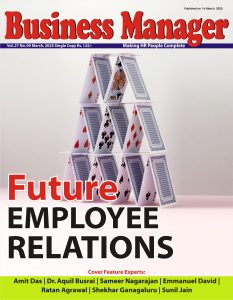Hybrid work model born out of Covid compulsions, which is a mashup of office working and work from home/remote working, will be the future work model of the businesses. It is going to stay in one form or the other. It is new way of working. Majority of the organisations have prepared themselves to adopt this work model but challenges of the adoption may be a crucial concern in making it successful. The success of this model will be based on how best people are put in center of the model. Intelligent combination of tech and people will drive the success. It is also to be kept in mind that it is not a one size fits all. Each organization has to tailor its own model by looking into the requirements.
To make it successful, productive and purposeful, the pillars of this model should consist of productivity, flexibility and connectivity. Leaders need to understand the needs of employees and their expectations along with making them understand the objectives of the organisations. This two-way collaboration in fully understanding each other should reflect in decisions while roling out the mechanism of Hybrid work model. Since this way of working is new, people are bound to commit mistakes. Take it easy, admit and learn from the mistakes and make changes accordingly. Be flexible and make adaptations.
Also read : Feeling of inclusion is vital in Hybrid work model – Alok Nigam
While documenting the model, it is necessary of keeping in mind the legal frame work. The employment contracts need to include the details of such working and expectations of organisations so that it does not become a mere additional perk for some employees included in the model. Hybrid working should not be taken as a basic term of employment as a right. Organisation must have the authority to unilaterally withdraw the model and call employee back to office at any time, may be with some advance notice. Even if flexibility is inbuilt, it should be subject to the conditions of the requirements and administrative exigencies of the organization. To ensure robust connectivity, every operation needs to be humanized with the support of technology. Leaving aside the human element, and relying fully on technology, may give a miss.
This model, while may result into higher productivity and employee experience, it has challenges too. Do not run this model simply as policy compliance. It will result into increased isolation of employees working remotely or from home. Flexibility makes coordination difficult. So, managers need to increase the communication, may be informally or formally with such employees. Trust, accountability and measuring productivity will be another challenge. Managers cannot afford to ignore this aspect and should address these with having continuous dialogue with the employees.
This edition cover story is on Hybrid work model attempting to understand the issues, complexities, benefits and challenges, organizations may face while switching to this model and how to make it workable effectively.
If you like it let us know. If not, well, let us know that too.
Happy Reading!






















Add comment